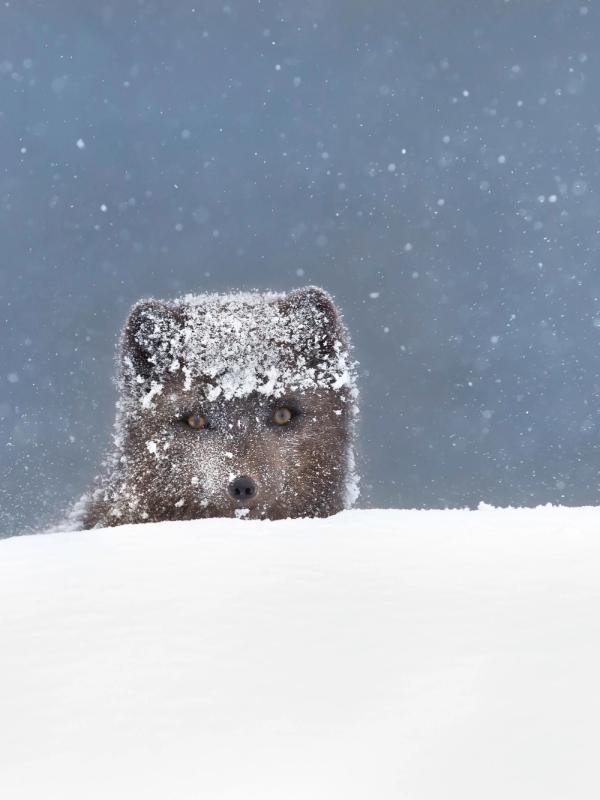
Weather in Iceland in December: A Full Guide
Visiting Iceland is one of the best travel experiences that can be experienced nowadays. The country has a lot of amazing places that are waiting for you to discover. However, deciding when to come can be a bit difficult, as Iceland offers different sides depending on the time of the year.
December is a great choice, a unique experience, but it has its tricky part. The weather can be quite challenging for those unprepared. In this guide, we’ll take you through the most important things you need to consider to have a fantastic winter experience in this majestic Nordic country. We’ll explain everything in detail as well as give you some tips on things you might not have considered yet.
Key Takeaways
- December temperatures average around 0°C (32°F), with Reykjavik ranging from -1°C to 4°C (30°F to 39°F).
- There are 4 to 5 daylight hours early in the month, decreasing to just under 4 hours by the winter solstice.
- December sees about 15 days of rain or snow, with coastal areas receiving more precipitation than inland regions.
- Snow, ice, and strong winds can make driving difficult.
What is the average temperature in December in Iceland?
While November is considered the month when winter begins in Iceland, it’s in December when it comes into full effect. It’s, in general, a cold month, but it’s colder by the end than at the beginning. The average temperature in December hovers around 0°C (32°F) but can vary significantly depending on the time of day and location.
In Reykjavik, the capital, temperatures typically range from -1°C to 4°C (30°F to 39°F). Coastal areas tend to be milder due to the influence of the North Atlantic Ocean. However, the wind can make it feel colder than it actually is. In the Central Highlands and the northern regions, the temperatures are normally colder, often below freezing.
Despite these chilly temperatures, Iceland’s winter is relatively mild compared to other regions at the same latitude, thanks to the oceanic influence that moderates the climate.
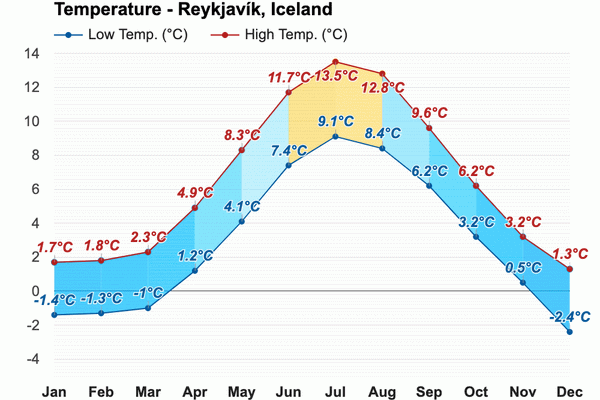
How much does it rain or snow in December in Iceland?
December in Iceland is usually a wet month, with frequent precipitation in the form of rain, snow, sleet, or a mix of all three. On average, there are 15 rainy or snowy days during the month.
The amount of precipitation can vary depending on where you are in the country. Generally, coastal areas receive more rain and snow than inland regions.
Snowfall is common, especially in the north and the Westfjords, creating a winter wonderland effect on the landscapes that is incredibly beautiful. However, the weather can be unpredictable, with storms and blizzards occurring suddenly, leading to rapidly changing conditions.
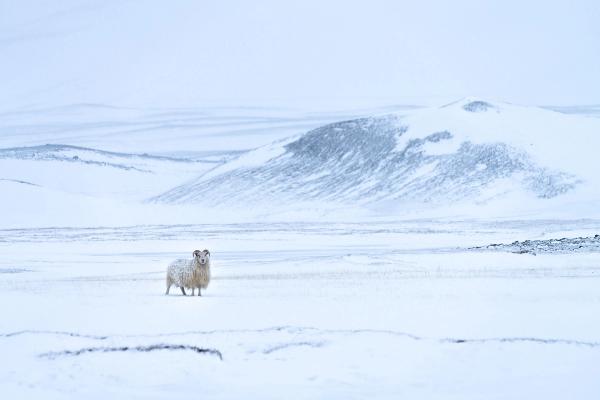
Daylight Hours in December
Daylight in Iceland changes a lot throughout the year because it's so far north, close to the Arctic Circle.
Daylight hours in December are scarce. The shortest day of the year is December 21st, the winter solstice. In Reykjavik, daylight lasts for about 4 to 5 hours at the beginning of the month, decreasing to just under 4 hours by the solstice.
In northern regions, the daylight hours are even shorter, and in some areas close to the Arctic Circle, the sun barely rises above the horizon. This phenomenon is known as polar twilight, as the sun is never fully out, and there’s just a dim light that lightens the sky. This allows you to see the country in a completely different light compared to other months, and it’s a beautiful scene.
The extended dark hours come with great news, too. During the night, in winter, is when there are more chances to see the Northern Lights, one of the most amazing and surprising things that can be witnessed in Iceland.

The weather in different regions of Iceland in December
Iceland’s weather can vary significantly from one region to another. The sea and the altitude can have a direct impact on a region’s climate, especially in December.
Reykjavik and the South Coast
This area experiences milder temperatures due to the ocean’s influence. Rain and snow are common events. The most distinctive feature is the wind, which can change the weather at a moment's notice, going from a storm to sunshine in a matter of minutes.
The Westfjords
This remote region is known for its heavy snowfall, and it’s often colder and more prone to winter storms. Travel can be challenging due to snow-covered roads.
North Iceland
This area experiences some of the coldest temperatures in the country, apart from the Highlands. Snow is frequent, and the number of daylight hours is the lowest in December, but it’s also a great place to see the Northern Lights.
East Iceland
Similar to the north, the east is cold, and it snows often. On the other hand, it’s less windy than some other parts of the country.
The Highlands
Winter is a difficult time in the Central Highlands. They are usually inaccessible in December due to heavy snow. This part of the country has many unpaved roads that close under adverse weather.
December 2024 Weather Recap
December 2024 in Iceland had all the hallmarks of a classic winter month—cold days, snowy landscapes, and stormy weather over the holidays. The south and west got more rain than usual, while the north and east stayed drier but dealt with biting cold. Here’s a closer look at how last December shaped up:
Temperatures
To close the year, the monthly temperatures remained below the average of the last three months.
- Reykjavík: The average temperature was -0.6°C (30.9°F), which is 1.4°C (2.5°F) below the 1991–2020 average and 1.0°C (1.8°F) cooler than the past decade’s average.
- Akureyri: Akureyri came in at -2.3°C (27.9°F), 1.6°C (2.9°F) below the 1991–2020 average and 0.9°C (1.6°F) lower than the last decade’s average.
- In Stykkishólmur, the monthly average here was -1.1°C (30°F), and Höfn in Hornafjörður recorded -0.6°C (30.9°F).
Additional Temperature Highlights
December wasn’t as cold as the last two years, but it was still chilly overall:
- The Westfjords, northern coasts, and southeast were the coldest compared to the last decade, while some inland areas were slightly warmer.
- The highest temperature was 17.6°C (63.7°F) in Siglufjörður and Sauðanesviti on December 8th, the warmest December temperature recorded in Siglufjörður since automated measurements began in 1995.
- The coldest temperature was -28.6°C (-19.5°F) in Svartárkot on December 31st, the lowest recorded in inhabited areas.
December 2024 Extremes
- Reykjavík: From -12°C (10.4°F) on December 2nd to 10°C (50°F) on December 9th.
- Akureyri: From -22°C (-7.6°F) on December 31st to 12°C (53.6°F) on December 9th.
Precipitation
Rainfall was heavier in the south and west but lighter in the north and east:
- Heavy rain on December 8th and 9th caused flooding in Öræfi and under Eyjafjöll, damaging roads and power lines near Vík í Mýrdal.
Rainfall totals:
- Reykjavík: 89.3 mm (3.52 in), about 95% of the December average.
- Akureyri: 28.4 mm (1.12 in), only 40% of the average.
- Stykkishólmur: 118.4 mm (4.66 in).
- Höfn í Hornafjörður: 111.6 mm (4.39 in).
Days with 1.0 mm (0.04 in) or more of rain:
- Reykjavík: 19 days, five more than average.
- Akureyri: 7 days, five fewer than average.
Snow
Snow made its presence felt, especially in the north:
- Reykjavík had 15 snow-covered days, three more than the 1991–2020 average.
- Akureyri recorded 19 snow-covered days, one more than average.
Sunshine
December wasn’t bright, but Reykjavík did slightly better than usual:
- Reykjavík: 12.9 sunshine hours, 0.3 hours above average.
- Akureyri: No sunshine, as is typical for December.

What to Pack for the Weather in December
Packing for a trip to Iceland in December requires careful consideration to ensure you stay warm and dry in the often-harsh conditions. However, it’s not necessary to pack a huge suitcase full of things. If you are able to combine elements well, you’ll be able to adapt to the weather in Iceland in December.
- Layered clothing: Start with thermal base layers, followed by insulating layers such as fleece or wool, and finish with a waterproof and windproof outer layer. This system will keep you warm while allowing you to adjust to changing temperatures. If you are going to colder areas, a good coat can come in handy, but make sure it’s waterproof.
- Winter accessories: Pack a warm hat, gloves, and a scarf to protect against the cold and wind. Wool or thermal socks are also essential.
- Waterproof gear: A waterproof jacket and pants are necessary to stay dry during rain or snow. Waterproof and insulated boots are also a must, especially if you plan on exploring Iceland’s natural sites.
- Sunglasses: Even if the sun doesn’t show up much this month, and it’s low in the sky, its reflection on snow or ice can be very harmful to your eyes.
- Backpack: It can be a great ally during your excursions. You can carry snacks, water, a change of clothes, or extra layers to help you adapt to the weather changes.

Driving in Iceland in December
In December, snow, ice, and strong winds can make driving challenging, especially for those unfamiliar with the conditions in the country during this time of the year.
Many roads, especially in remote areas, may be impassable due to snow and ice. The Ring Road (Route 1), which circles the country, is usually kept clear, but conditions can still be demanding. In rural and mountain areas, secondary roads, especially the F-roads, the authorities are forced to close some routes. It’s essential to check the Icelandic Road and Coastal Administration’s website for real-time road conditions before setting out.
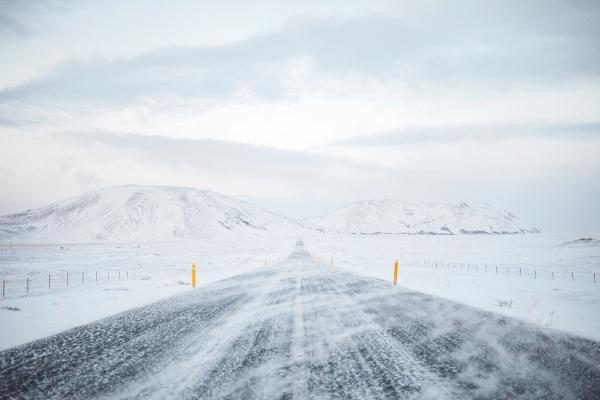
What to Do in Iceland in December
December is a fantastic time to visit Iceland, with plenty of activities to enjoy, despite the cold weather.
Witnessing the Northern Lights
Many people come to Iceland dreaming of seeing the Northern Lights. The phenomenon of the aurora borealis occurs between October and March, and December is one of the best moments to see these red, green, or white lights dancing in the sky. The longer hours of darkness increase your chances of seeing them, particularly on clear nights.
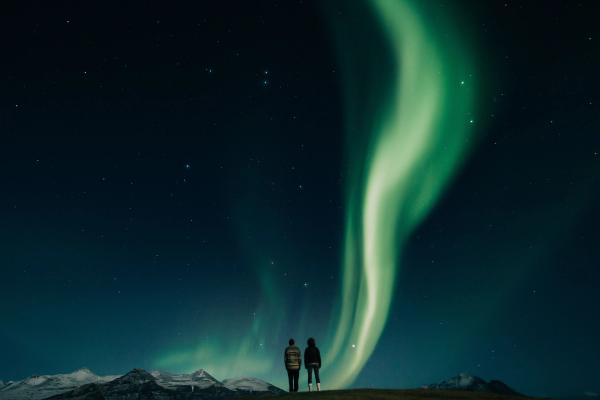
Exploring ice caves and glaciers
This is the prime season for visiting ice caves and glaciers like Vatnajökull. Guided tours are available and provide all the necessary gear and information to enjoy these astonishing places.
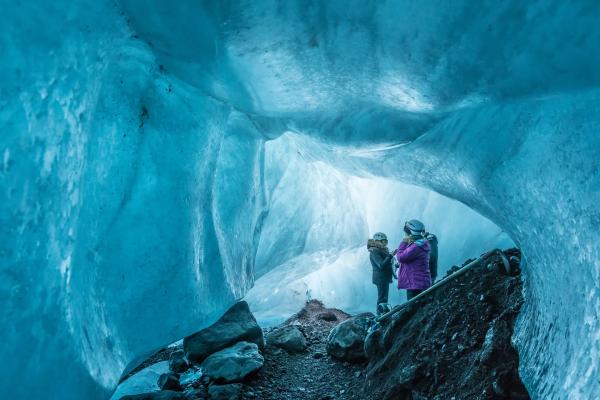
Hot springs and geothermal baths
Taking a hot bath in the middle of an amazing landscape while the temperature outside is around freezing is an incomparable experience. There are plenty of geothermal baths and hot springs in the country where you can enjoy this activity. The Blue Lagoon is the most famous, but there are plenty of other, less crowded options like the Secret Lagoon or the Forest Lagoon.
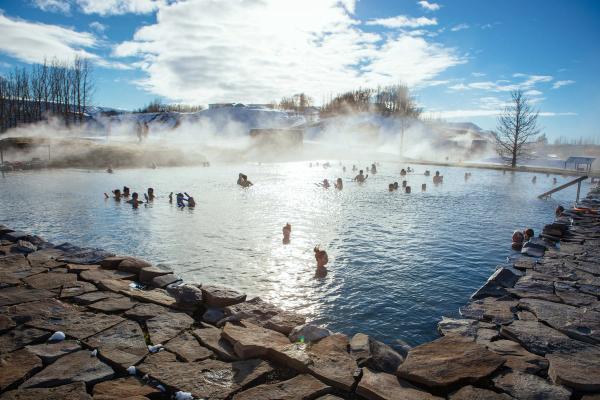
Golden Circle Tour
The Golden Circle is a loop that connects some of the best things to see in southwestern Iceland. Even in winter, this popular route is usually open. The combination of Þingvellir National Park, Geysir geothermal area, and Gullfoss waterfall is a must-see.

Cultural Events and Festivals in December
December in Iceland is rich in cultural events and festivities. At this time of the year, you can get to know some of the cultural traditions this country has.
- Christmas Celebrations: Icelanders celebrate Christmas with a mix of old and new traditions. The 13 Yule Lads, Iceland’s mischievous version of Santa Claus, visit children in the 13 nights leading up to Christmas. Reykjavik looks especially nice this time of the year, as the streets are filled with Christmas lights, and there are plenty of Christmas concerts and markets.
- New Year’s Eve: Reykjavik’s New Year’s Eve celebrations are legendary, with massive bonfires, fireworks displays, and parties across the city. The locals take their fireworks seriously, creating a spectacular show that lights up the entire city.
- Winter Solstice Events: The winter solstice is a significant event in Iceland, celebrated with various cultural activities, including music, dance, and storytelling, highlighting the importance of light in the darkest month of the year.
Travel Tips
We’re sure that you are going to love coming to Iceland in December, but here you have some things you might want to consider to make the most of your trip.
- Plan for short days: With limited daylight, plan your activities carefully. Make the most of the daylight hours and use the darkness to enjoy indoor activities or search for the Northern Lights.
- Stay flexible: The weather in December is unpredictable, so be prepared for changes in your itinerary. Keep an eye on weather forecasts and road conditions, and have a backup plan just in case.
- Book in advance: December is a popular time to visit Iceland, particularly around Christmas and New Year’s. Book your accommodation, tours, and activities well in advance to avoid unpleasant surprises.
- Respect nature: Iceland’s natural environment is fragile, and it’s everyone’s duty to help preserve it. Stick to marked paths, follow local guidelines, and be mindful of the impact of your visit on the landscape.
Conclusion: A winter wonderland waiting for you
Visiting Iceland in December is a magical experience, with its stunning winter landscapes, festive atmosphere, and unique cultural traditions. While the weather can be challenging, if you prepare well and are flexible, coming to this country by the end of the year can be a magical experience.
Whether you’re exploring ice caves, hunting for the Northern Lights, or soaking in a hot spring, December in Iceland offers a winter adventure like no other.

